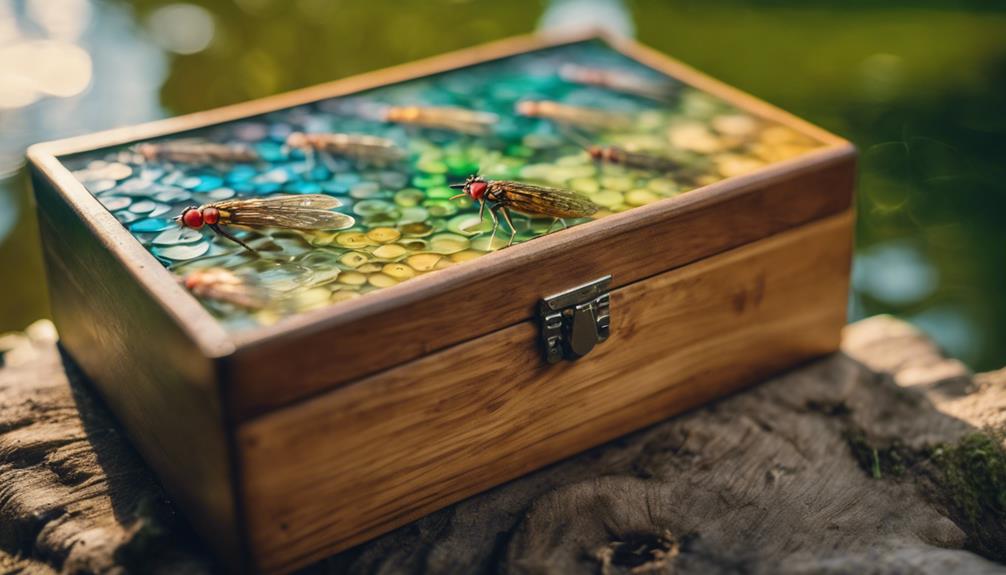Understanding the Importance of a Fly Fishing Net
When it comes to fly fishing, having the right gear is essential for a successful day on the water. Amongst the many tools anglers use, the fly fishing net stands out as a crucial piece of equipment. A fly fishing net not only helps in landing fish but also minimizes stress on the fish during catch and release. Selecting the right net can greatly enhance your fishing experience and increase your chances of success. In this comprehensive guide, we’ll cover everything you need to know about fly fishing nets, from types and materials to maintenance and tips for use.
Types of Fly Fishing Nets: Finding Your Perfect Match
When it comes to choosing a fly fishing net, understanding the different types available is essential. There are generally three main types of nets: landing nets, catch and release nets, and boat nets. Landing nets typically have a larger hoop and are designed to scoop fish out of the water easily. Catch and release nets, on the other hand, are often made with softer mesh materials to protect the fish’s slime coat and reduce injury. Boat nets are designed for anglers who fish from a vessel, and they often feature a longer handle for reaching over the side of the boat. By understanding these various types, you can select a fly fishing net that best suits your fishing style and needs.
Materials Matter: Choosing the Right Fly Fishing Net
The materials used in fly fishing nets can significantly impact their durability and functionality. Most fly fishing nets are made from wood, aluminum, or composite materials. Wooden nets are often favored for their aesthetic appeal and sturdiness, while aluminum nets are lightweight and corrosion-resistant, making them ideal for saltwater fishing. Composite materials offer a balance of durability and weight. Additionally, consider the type of mesh used in the net. Rubberized mesh is becoming increasingly popular as it is gentle on fish and reduces the likelihood of snagging hooks. Choosing the right materials will ensure that your fly fishing net lasts for many seasons.
Size and Shape: What to Consider When Selecting a Fly Fishing Net
The size and shape of your fly fishing net play a critical role in its effectiveness. Generally, larger nets are better for landing bigger fish, while smaller nets are easier to handle and store. The shape of the net hoop also influences performance: round nets are ideal for scooping fish quickly, while rectangular nets provide more surface area and are better for netting larger catches. When selecting a net, consider the species of fish you are targeting, the waters you’ll be fishing in, and how you plan to store the net. A well-sized net tailored to your fishing needs can make all the difference in your success on the water.
Weight and Portability: The Traveling Angler’s Guide
For anglers who love to explore new fishing spots, portability is key. A fly fishing net that is lightweight and easy to carry will enhance your overall fishing experience. Look for nets that come with collapsible or telescoping handles, which make them easy to stow away in your gear bag or pack. Additionally, consider the net’s overall weight. While you want something sturdy, a heavy net can become cumbersome during long hikes or fishing trips. By prioritizing weight and portability, you can ensure that your fly fishing net will always be at your side when you need it.
How to Properly Use a Fly Fishing Net
Using a fly fishing net might seem straightforward, but there are proper techniques to ensure that you land fish successfully while minimizing harm to them. First, always keep your net in a ready position as you reel in your catch. When the fish is close to the net, lower it into the water and scoop the fish from underneath, making sure to keep the net submerged. This reduces the chance of the fish flopping out and injuring itself. If you’re practicing catch and release, wet the net before using it to protect the fish’s skin. Understanding how to effectively use your fly fishing net will lead to more successful landings and healthier releases.
Maintenance Tips for Your Fly Fishing Net
To ensure that your fly fishing net lasts for years, proper maintenance is essential. After each fishing trip, rinse your net with freshwater to remove any debris or salt that can cause corrosion and wear. If your net is made of wood, consider applying a protective sealant to prevent water damage. Regularly inspect the net for any tears or damage, especially in the mesh, as these can affect its performance. If you notice any wear, repair or replace the net promptly. By taking care of your fly fishing net, you can guarantee that it remains a reliable companion on your fishing adventures.
Conclusion: Elevate Your Fishing Experience with the Right Fly Fishing Net
In conclusion, the right fly fishing net can elevate your fishing experience, making it easier and more enjoyable to land and release fish. By understanding the various types, materials, sizes, and maintenance practices, you can make an informed decision when selecting your net. Whether you’re a novice angler or a seasoned pro, investing in a quality fly fishing net that aligns with your fishing style and needs will undoubtedly enhance your time on the water. With the right net in hand, you’ll be ready to tackle any fishing adventure that lies ahead. Happy fishing!
